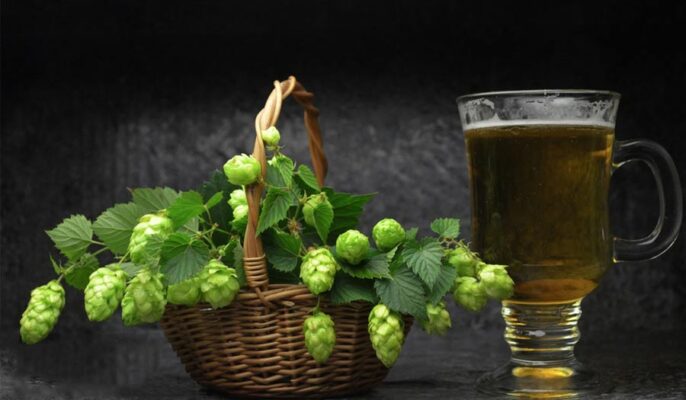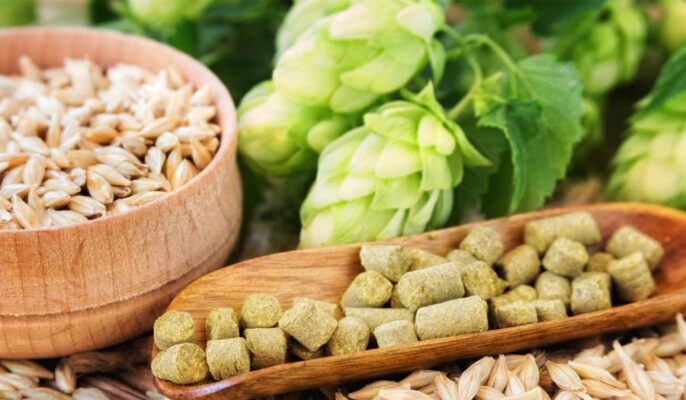Craft beer is an exact science. Brewers know that different types of yeast and different fermentation methods control the taste of beer. But a phenomenon known as “hop creep” can sometimes get brewers into trouble. Jumping Creepy isn’t an outdoor children’s game, nor is it an obnoxious character lurking around a bar. Hop creep is a common term that refers to the over-fermentation of dry-hopped hops. As dry hopping becomes a process step in breweries, and the average number of hops per dry hop increases, this phenomenon is detrimental to brewing results.
What is jump creep?
Hop creep is more fermentation in dry-hopped beers initiated by amylolytic enzymes in the hops. These enzymes break down non-fermentable dextrins into short-chain oligosaccharides such as maltotriose, maltose, and glucose. Although yeast does not know what to do with long-chain dextrins, it is able to ferment glucose and maltose.
During secondary fermentation, the remaining yeast cells in the new beer convert these sugars into alcohol, carbon dioxide, and secondary metabolites, which are unwanted fermentation intermediates. The term “hop creep” was coined by American craft brewers because it is a hidden, slow process that can cause brewers unpleasant surprises. This phenomenon is now the subject of research.

Do all hops cause hop creep?
While different hop varieties perform in soluble starch solutions, they perform in real-life dry-hopping trials. A 2018 article published in the Journal of the American Society of Brewing Chemists explains that while the theory has yet to be proven, hop genetics do appear to influence their activity, with Amarillo® and Cascade altering alcohol and concentration levels more than others. Simcoe®, Centennial, and Citra®. That said, plant or cone maturity (but not age), farming conditions, and handling and processing during and after harvest influence the hop crawl activity of each variety.
What are the effects of hop creep?
Hop creep is re-fermenting the remaining dry hops in the beer through other means. During the fermentation of dry hops, hop-related enzymes begin to break down the unfermentable dextrins left over from primary fermentation. Any remaining yeast in the finished beer will metabolize these released sugars and produce alcohol and carbon dioxide.
- Active yeast metabolizes new fermentable sugars and produces more alcohol. Flavor effects from extra alcohol. Out-of-season beers may be thrown away.
- Active yeast will metabolize new fermentable sugars and produce more carbon dioxide. Excess carbon dioxide in packaged beer can cause overcarbonation. Furthermore, the increase in pressure may cause the container to rupture.
- Active yeast secretes acetolactate during fermentation, which is then oxidized to form diacetyl compounds. Beer tastes like butter or butterscotch. Generally speaking, diacetyl is considered a defect in most beer styles, especially when present in high amounts.
What causes hop creep?
Before we jump straight into managing jump creep, let’s discuss some of the factors that influence jump creep. To reiterate the obvious, hop creep only occurs when beer is dry-hopped. Many of the dry hop factors that affect flavor and aroma also affect hop creep:
- Time: The longer the hops and beer are mixed, the more their enzymes are able to break down the dextrins left over from primary fermentation.
- Temperature: Generally speaking, the higher the temperature, the higher the yeast fermentation activity. These warm temperatures may also induce unhealthy yeast cells to reenter fermentation.
- Amount of hops: More hops equals more enzymes to break down dextrins.
- Hop processing: Before hops are distributed to the brewery, they undergo a dehydration or “drying” process. This process prevents the hops from spoiling during distribution and storage. The hops producer will heat the hops. If the heat is high enough and applied for the right time, most of the enzymes responsible for hop creep will denature.
- Hop varieties: as different hop varieties vary in oil content and composition, enzyme activity also varies by hop variety.
- The beer itself: Dry-hopping a beer that contains a lot of residual sugar will, in time, produce more fermentable sugars from hop creep.

How to prevent hops creep?
Hop form
Carbon dioxide extract and cryogenic pellets are less likely to cause hop creep. Whole cone hops are more likely to cause hop creep because the enzyme in question is believed to be involved in the hops’ green stuff, which is more prevalent in whole cones.
Dry hop duration
Shorter dry hop duration reduces the impact and potential for hop creep.
Dry hop temperature
A dry hop temperature of 50 degrees F (10 degrees C) or lower is recommended to reduce or prevent hop creep. Higher dry hop temperatures may promote its occurrence.
Amount of dry hops
It is recommended to use low dry hop loads (less than 2 pounds per barrel or about 6.5 grams/liter) to reduce hop creep. Greater amounts of dry hops may increase the risk and severity of hop creep.
Fermenter Yeast Load
Hop creep can only occur with active yeast in the beer suspension – the more yeast there is in the suspension, the greater the potential for hop creep when dry hops are added.
Packaging yeast exists
Hop creep can be prevented if the yeast is removed from the beer before packaging. This may not be possible at the home brewing level, and in certain commercial types of beer, such as those that are hazy, the presence of hops is necessary.




